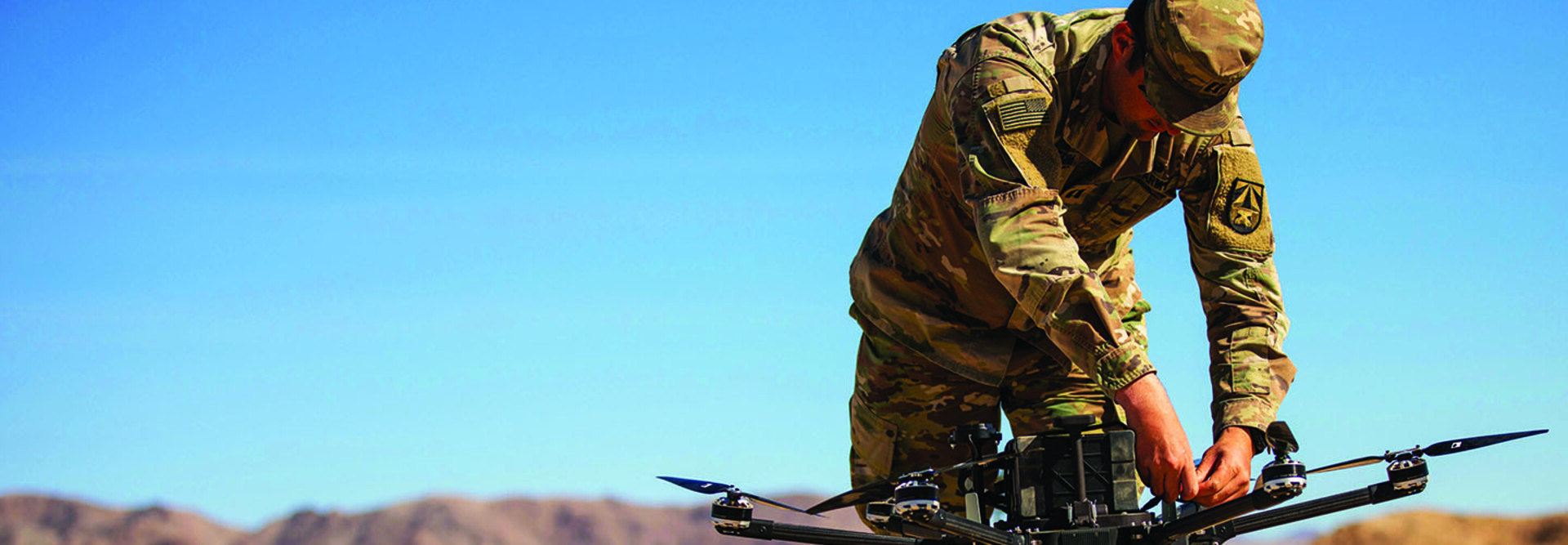The Army Software Factory and its Artificial Intelligence Integration Center are linchpins in the force’s efforts to expand the scope and scale of AI training in its talent pipeline.
Demand for AI skill sets in the Army far exceeds the current supply, but the ASWF and AI2C, in particular, will instill a general understanding of AI across the Army, said Joseph Welch, deputy to the commanding general of the Army Futures Command.
The Army partnered with Carnegie Mellon University to launch the AI2C in 2019 to build a community around AI and identify emerging technologies, and it launched the ASWF in 2021 to innovate AI products. The AI knowledge these entities provide will be specialized for some Army echelons but ultimately imparted down to rifle squads — similar to counter-unmanned aerial systems training — given the ubiquitous nature of that threat.
“To some degree, there’s going to be a level of software operations, AI knowledge that’s going to need to be resident everywhere,” said Welch, during his speech at TechNet Augusta 2025 on Thursday.
Click the banner below to begin training an AI-ready workforce.
AI Skills Training to Enable Experimentation in the Field
The difference between counter-UAS and AI training is that the latter is rooted in opportunity, Welch said.
Soldiers with general software operations training won’t build the Army’s next data platforms. Instead, they’ll be able to access, use and manipulate existing platforms — experimenting and prototyping with them to rapidly react to commanders’ information and planning needs with visualizations and analysis.
“I think we have work to do in terms of what that force structure looks like,” Welch said.
How AI training manifests at each Army echelon — whether certain skills can be learned in the field, and whether those skills constitute career fields or simply additional qualifications — needs to be decided as training continues.
Click the banner below to keep up with FedTech as an Insider.
As soldiers develop AI skills, the technology is expected to handle other tasks — eliminating the Army’s need to teach them. Establishing new skill sets and determining the proper balance of AI versus human decision-making should occur in safe situations such as home station training, training centers, exercises and experiments.
“The best way to do that is to start incorporating this capability, when we have the opportunity, in more controlled environments and learn what guardrails may need to look like — where humans in the loop may need to be integrated into the system,” Welch said.
Retaining Military and Civilian Cybersecurity Personnel
The Army also continues to rethink how it recruits, trains and retains military and civilian cybersecurity personnel.
“Our Signal and Cyber corps have done a good job at this,” said Brandon Pugh, principal cyber adviser to Army headquarters, at the conference Wednesday. “It’s as simple as looking [at permanent change of station] cycles, what an incentive program looks like, how we work through different levels of mastery.”
Click the banner below for the latest federal IT and cybersecurity insights.
Pugh, who is eight weeks into his role, said the Army has also made “great strides” with civilian personnel. The Department of Defense’s Cyber Excepted Service system manages the entire lifecycle of civilian cyber professionals, and the Army has carved out exceptions for certain CES positions during hiring freezes.
Army Cyber Command must feed talent to U.S. Cyber Command while replenishing its own ranks, but being mission-driven helps.
“The mission you have, regardless of what entity in cyber and the military you work for, is just so unique,” Pugh said. “And the exposure and experience you’re going to get so early on is much different than what my friends in industry are seeing.”
To learn more about TechNet Augusta, visit our conference page. You can also follow us on the social platform X at @FedTechMagazine to see behind-the-scenes moments.

















